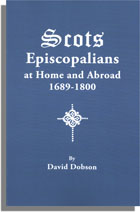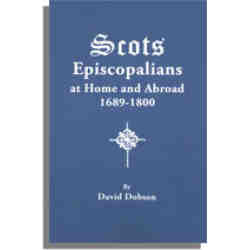The Registers of the Church of Scotland represent the single most important genealogical source for Scottish family historians prior to the statutory registration of vital records in 1855. The records of the Episcopal churches in Scotland are among the handful of denominational records to which this statement does not apply, however, and history tells us why.
In 1688 Episcopalians comprised about 25% of Scotland’s population and, along with Presbyterians, were members of the Church of Scotland. Following the overthrow of James VII of Scotland (James II of England) in that year, the Episcopalians endured a century-long period of disestablishment, persecution under the Penal Acts of the 18th century (partially as punishment for their participation in the Jacobite wars of 1715 and 1745), immigration, and/or exile to the Americas. Not until the death of Bonnie Prince Charlie in 1788, when the Scottish bishops agreed to pray for King George III, were Episcopalians able to operate without restriction. The genealogical legacy of this history was the disappearance of parish registers comparable to those of the contemporary Church of Scotland.
For his latest book genealogist and historian Dr. David Dobson has surveyed a variety of primary and secondary sources for the purpose of assembling a list of baptism, marriage, and death records in the absence of official registers. Many records are in original manuscript form in churches or diocesan libraries, some are in typescript or manuscript sources in the National Archives of Scotland, while a handful of others have been published in full or in part. All of Dr. Dobson’s entries identify the Episcopalian by name, location, a date, and the source. Many attest to the individual’s confirmation, spouse or other relative, occupation, and even destination in the colonies. While he would be the first to claim that his efforts are far from comprehensive, the compiler has nonetheless rescued the religious affiliation of about 2,000 18th-century Scots men, women, and children that might otherwise have eluded researchers for years, if not decades, to come.


